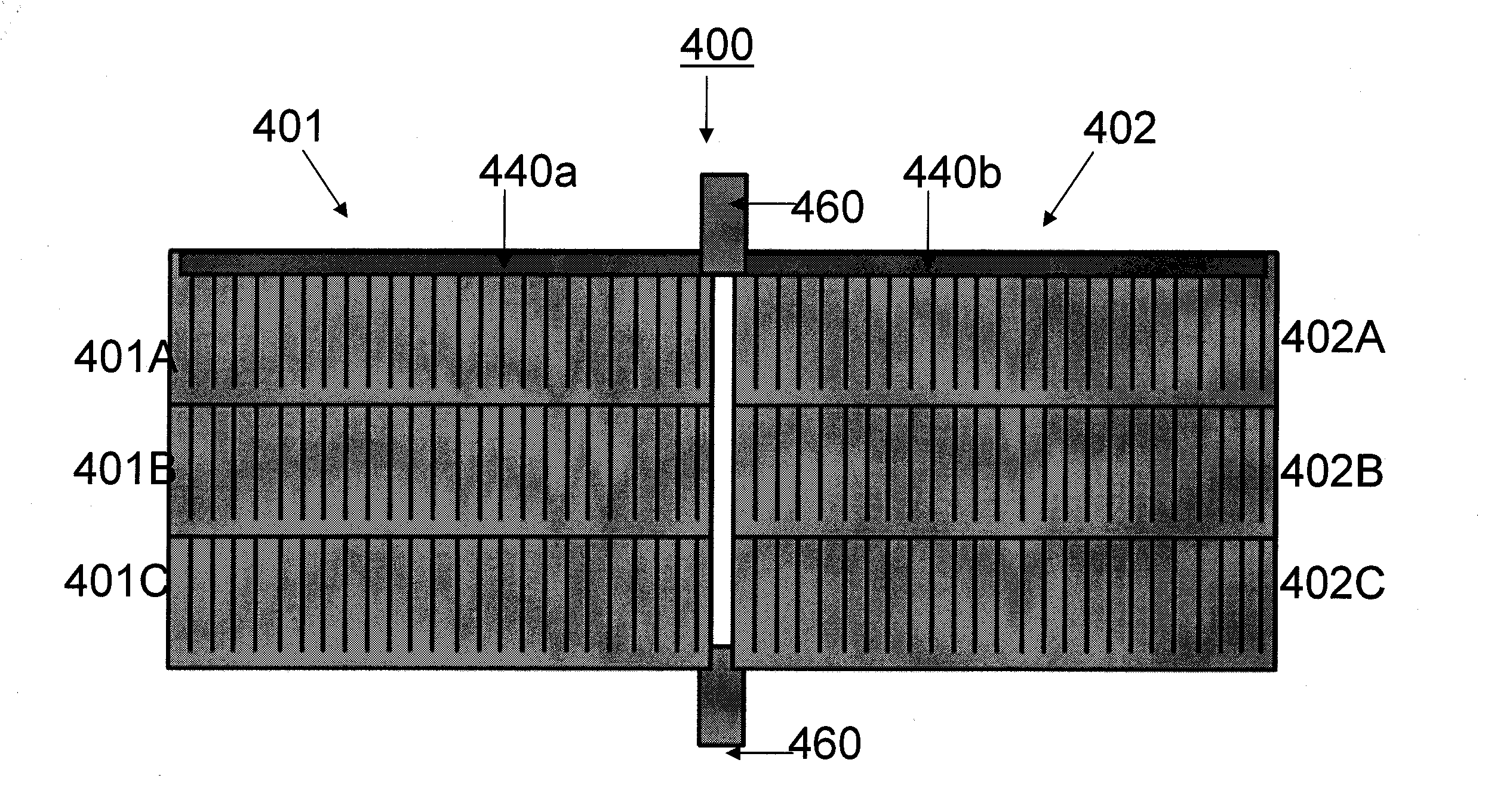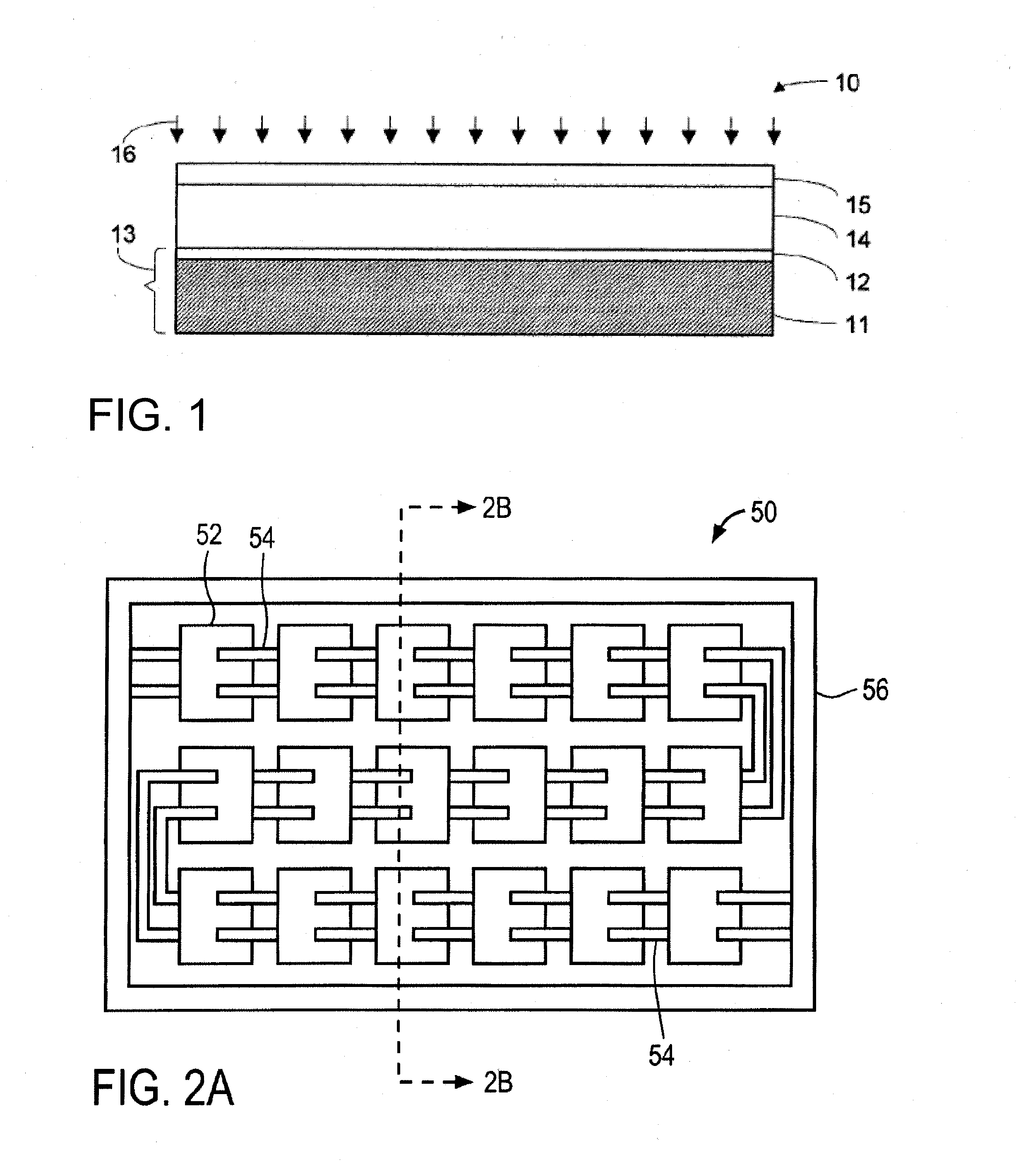Methods of interconnecting thin film solar cells
a technology of solar cells and thin films, applied in the direction of photovoltaics, electrical equipment, semiconductor devices, etc., can solve the problems of monolithic integration structure of modules, unbreakable, and light weight of flexible modules, and unlike glass based si solar modules
- Summary
- Abstract
- Description
- Claims
- Application Information
AI Technical Summary
Benefits of technology
Problems solved by technology
Method used
Image
Examples
Embodiment Construction
[0039]The embodiments described herein provide methods of interconnecting solar cells or photovoltaic (PV) cells. Embodiments will be described with reference to specific interconnected solar cell configurations or arrays. However, it will be appreciated that embodiments of the present invention may be practiced with other configurations without departing from the scope of the present invention.
[0040]Embodiments described herein provide module structures and methods of manufacturing rigid or flexible PV modules employing thin film solar cells fabricated on flexible substrates, preferably on flexible metallic foil substrates. The solar cells may be Group IBIIIAVIA compound solar cells fabricated on thin stainless steel or aluminum alloy foils. The modules may each include a moisture resistant protective shell within which the interconnected solar cells or cell strings are packaged and protected. The protective shell may comprise a moisture barrier top protective sheet through which t...
PUM
 Login to View More
Login to View More Abstract
Description
Claims
Application Information
 Login to View More
Login to View More - R&D
- Intellectual Property
- Life Sciences
- Materials
- Tech Scout
- Unparalleled Data Quality
- Higher Quality Content
- 60% Fewer Hallucinations
Browse by: Latest US Patents, China's latest patents, Technical Efficacy Thesaurus, Application Domain, Technology Topic, Popular Technical Reports.
© 2025 PatSnap. All rights reserved.Legal|Privacy policy|Modern Slavery Act Transparency Statement|Sitemap|About US| Contact US: help@patsnap.com



